Abstract
In simple situations, animals consistently choose the better of two alternatives. On concurrent variable-interval variable-interval and variable-interval variable-ratio schedules, they approximately match aggregate choice and reinforcement ratios. The matching law attempts to explain the latter result but does not address the former. Hill-climbing rules such as momentary maximizing can account for both. We show that momentary maximizing constrains molar choice to approximate matching; that molar choice covaries with pigeons' momentary-maximizing estimate; and that the “generalized matching law” follows from almost any hill-climbing rule.
Keywords: optimal behavior, momentary maximizing, matching law, concurrent schedules, variable interval, variable ratio, key peck, pigeons
Full text
PDF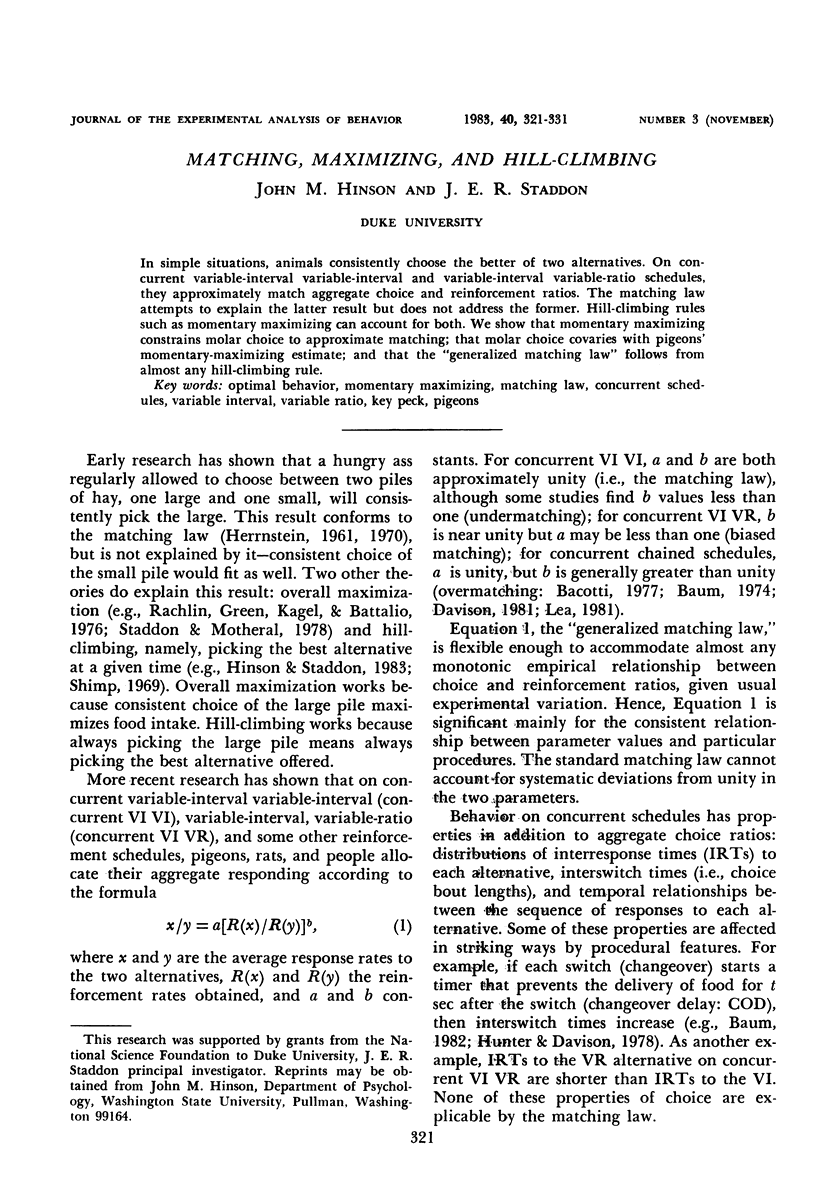
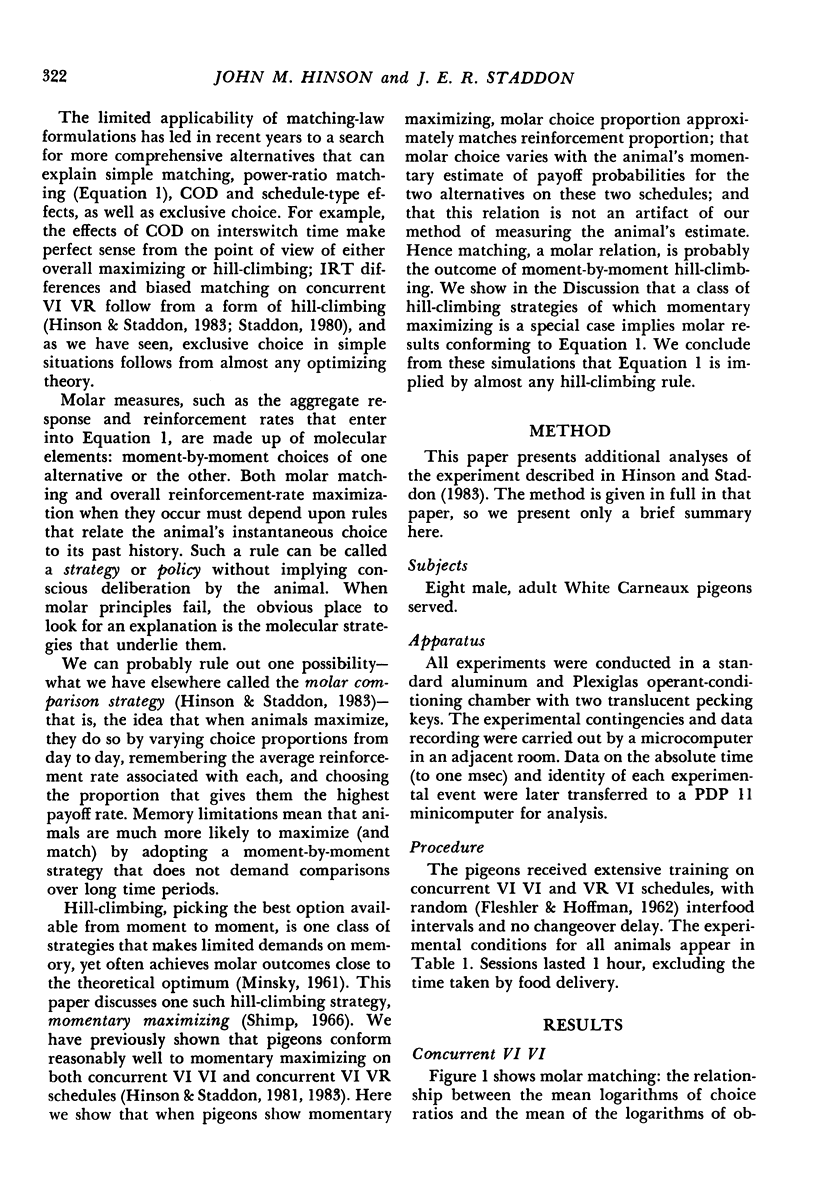
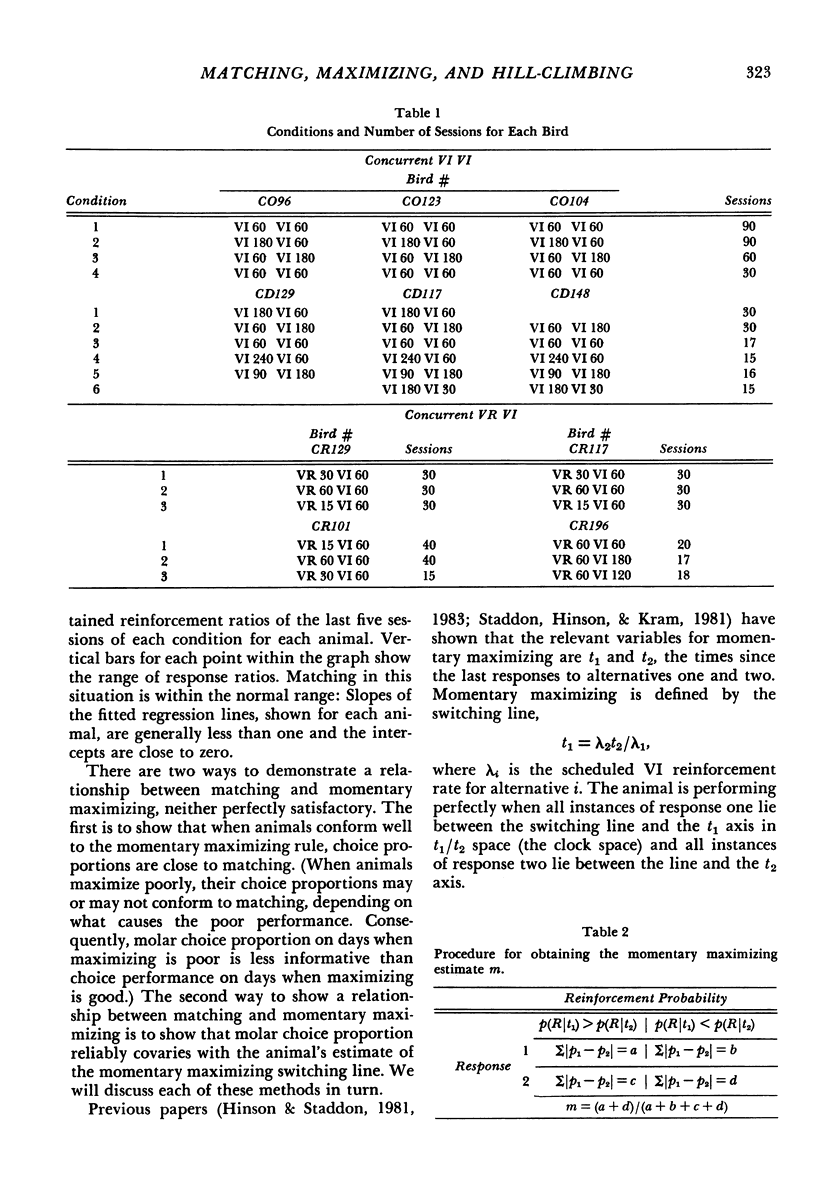
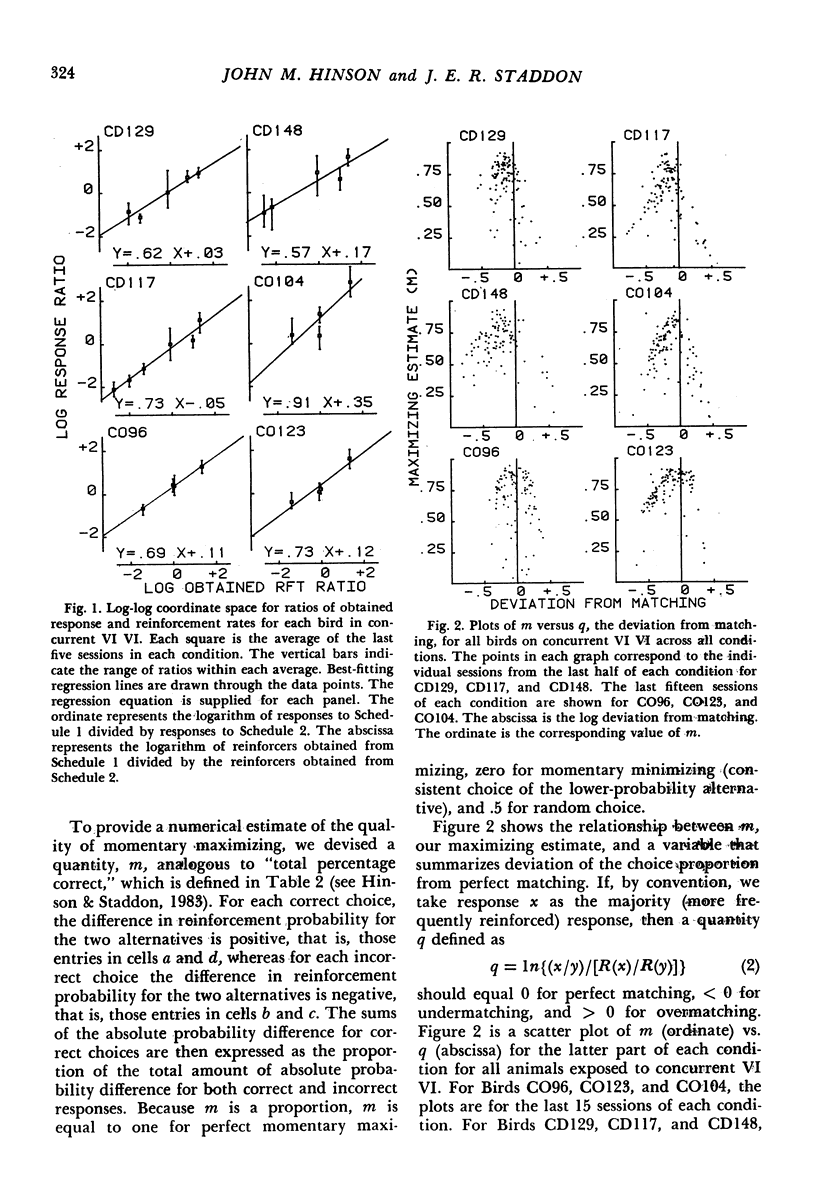
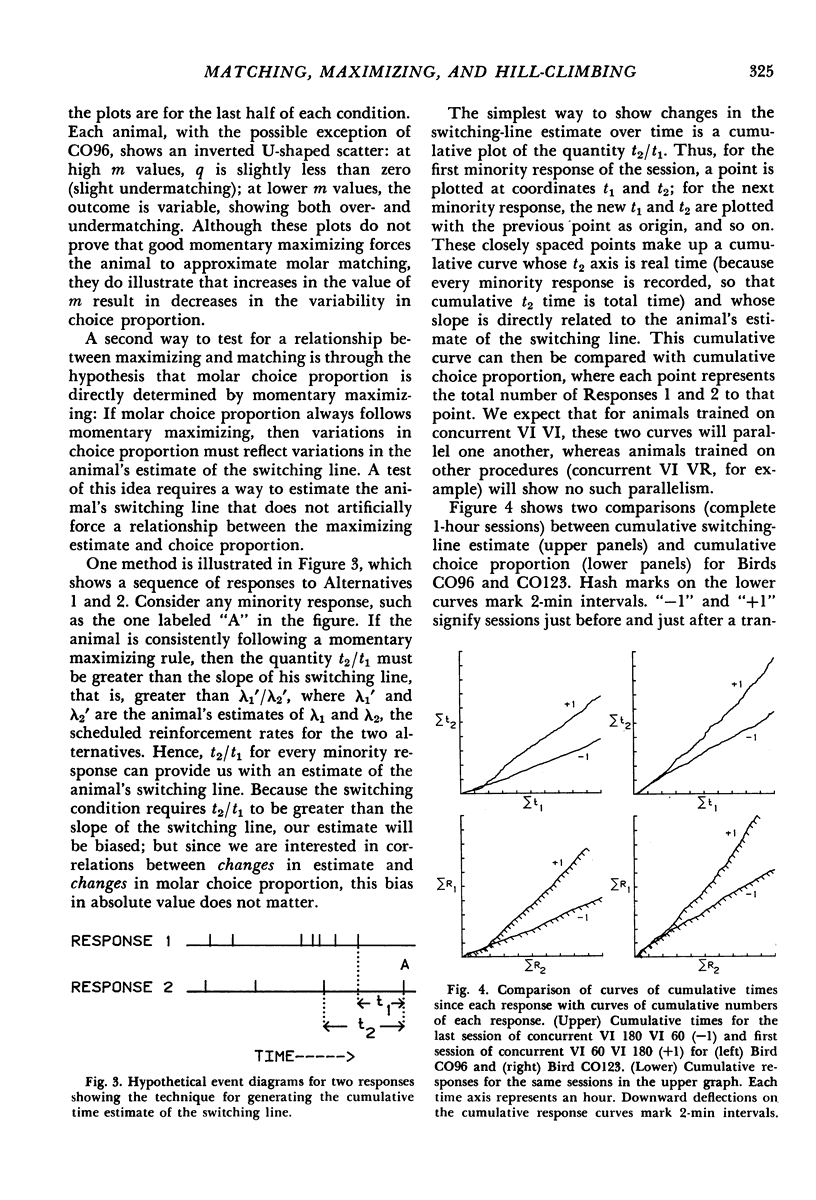
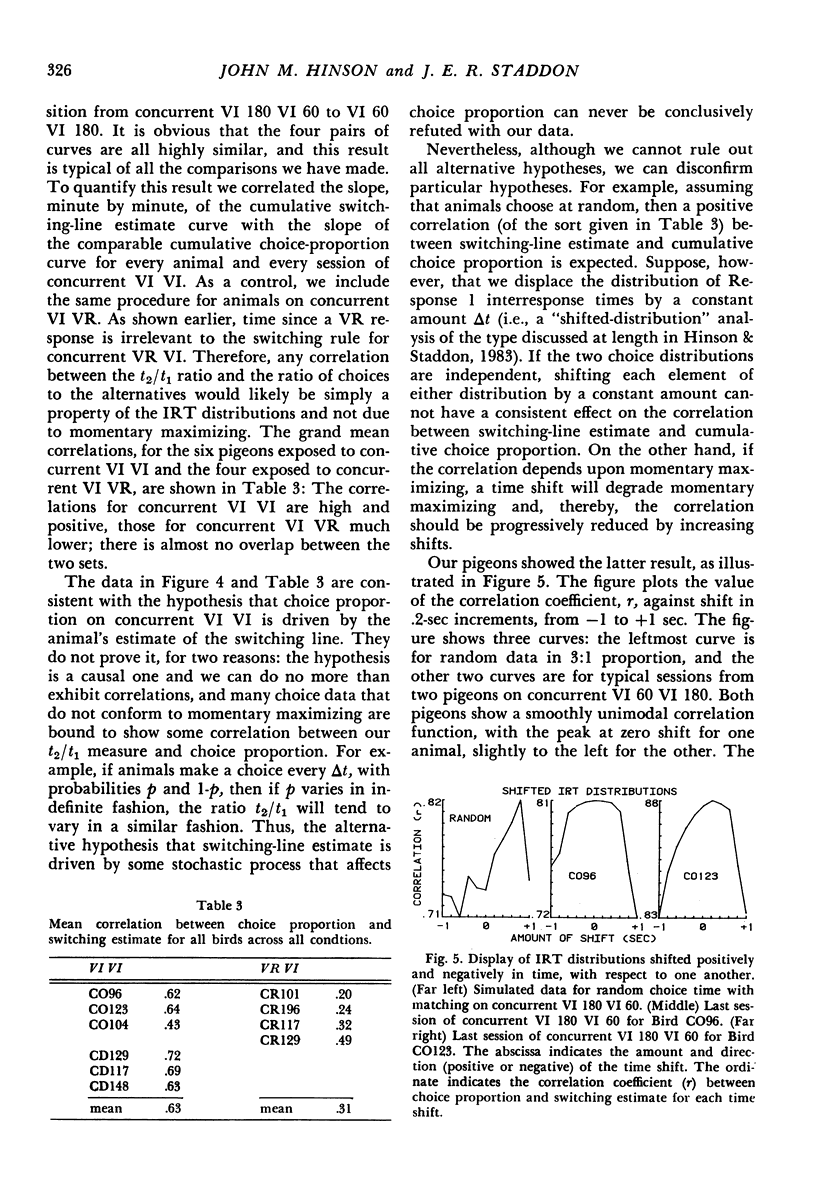
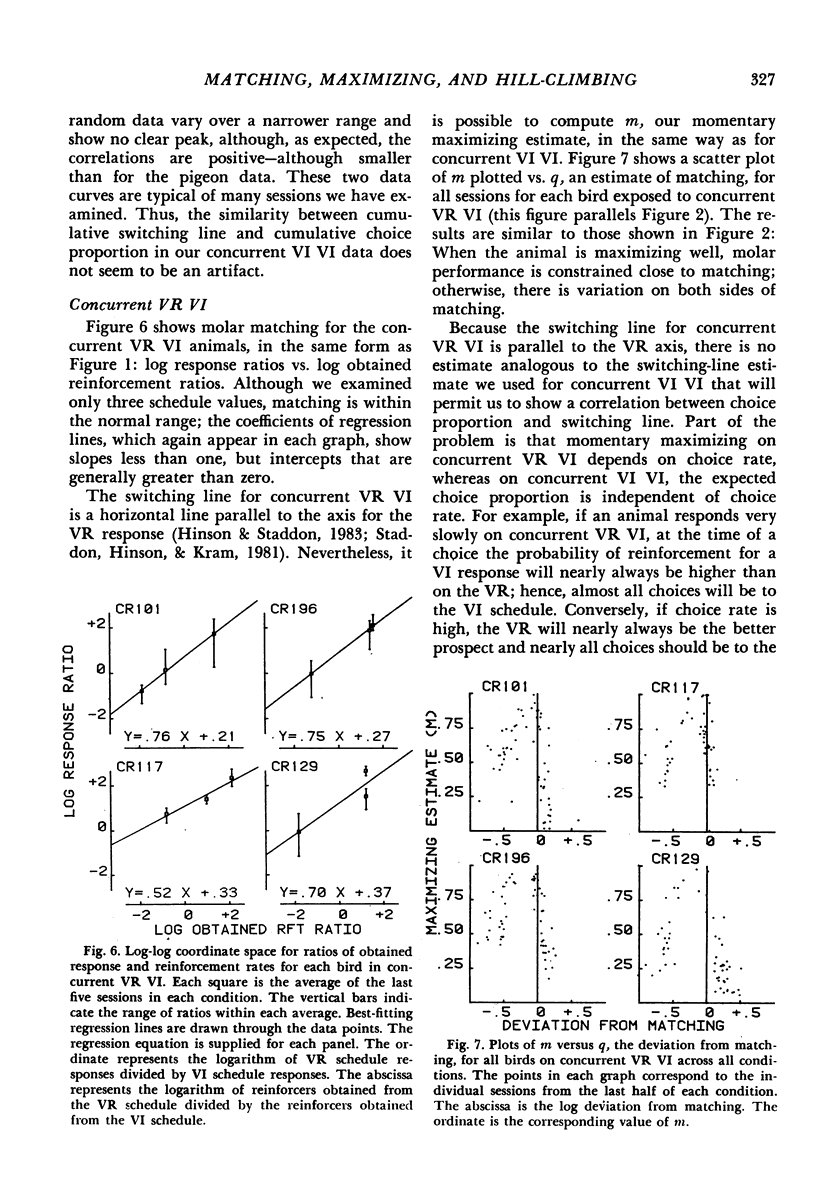
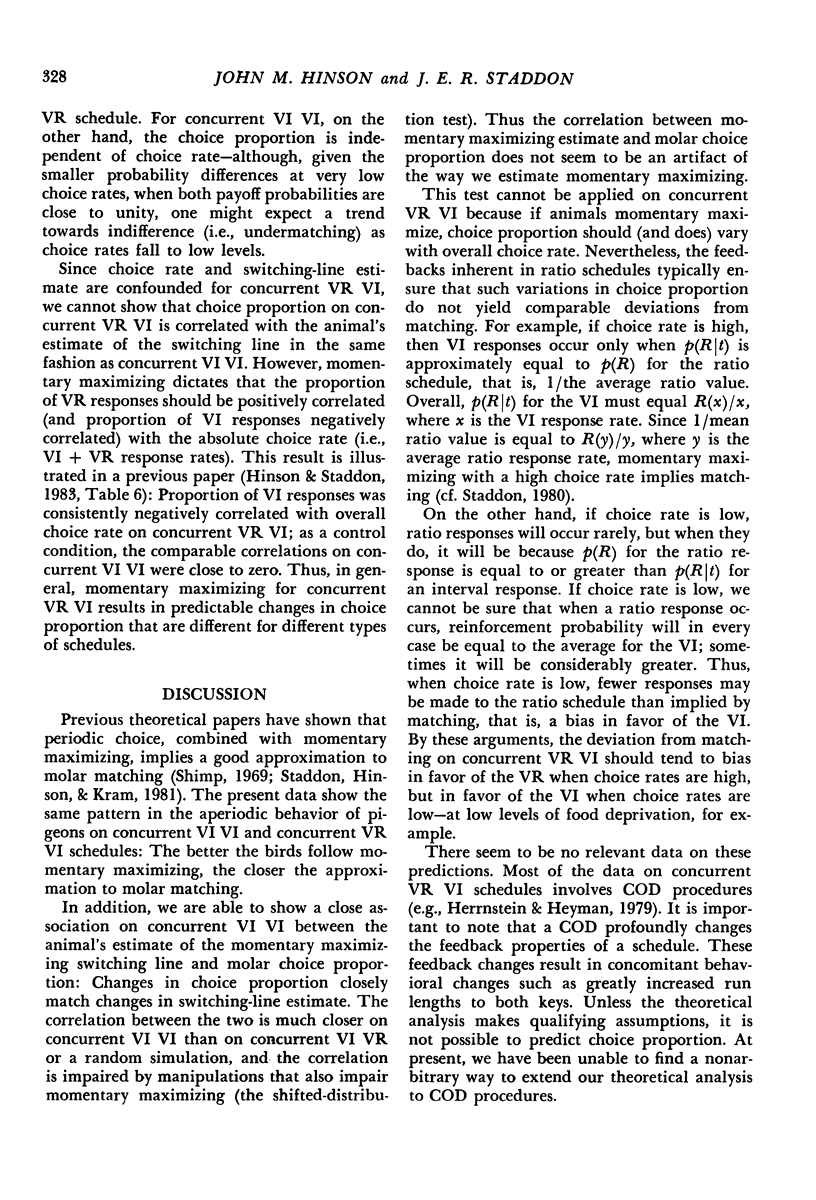
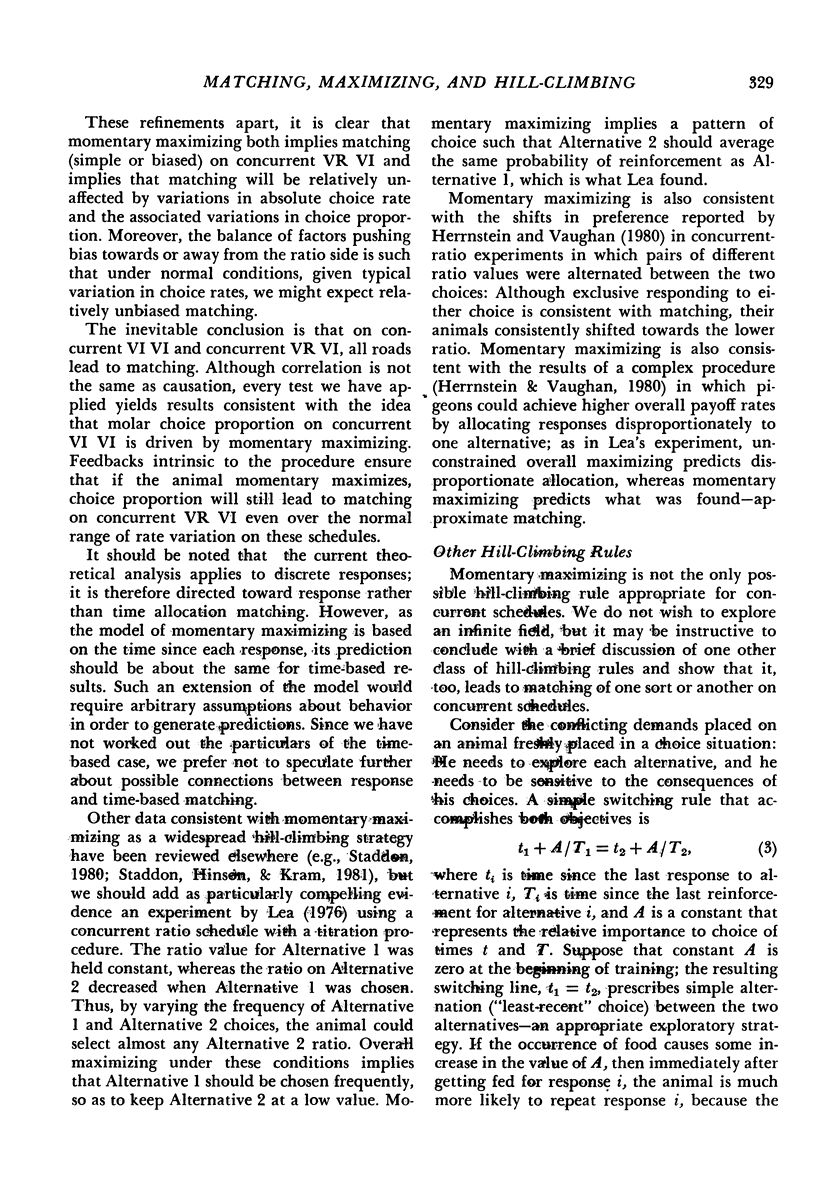

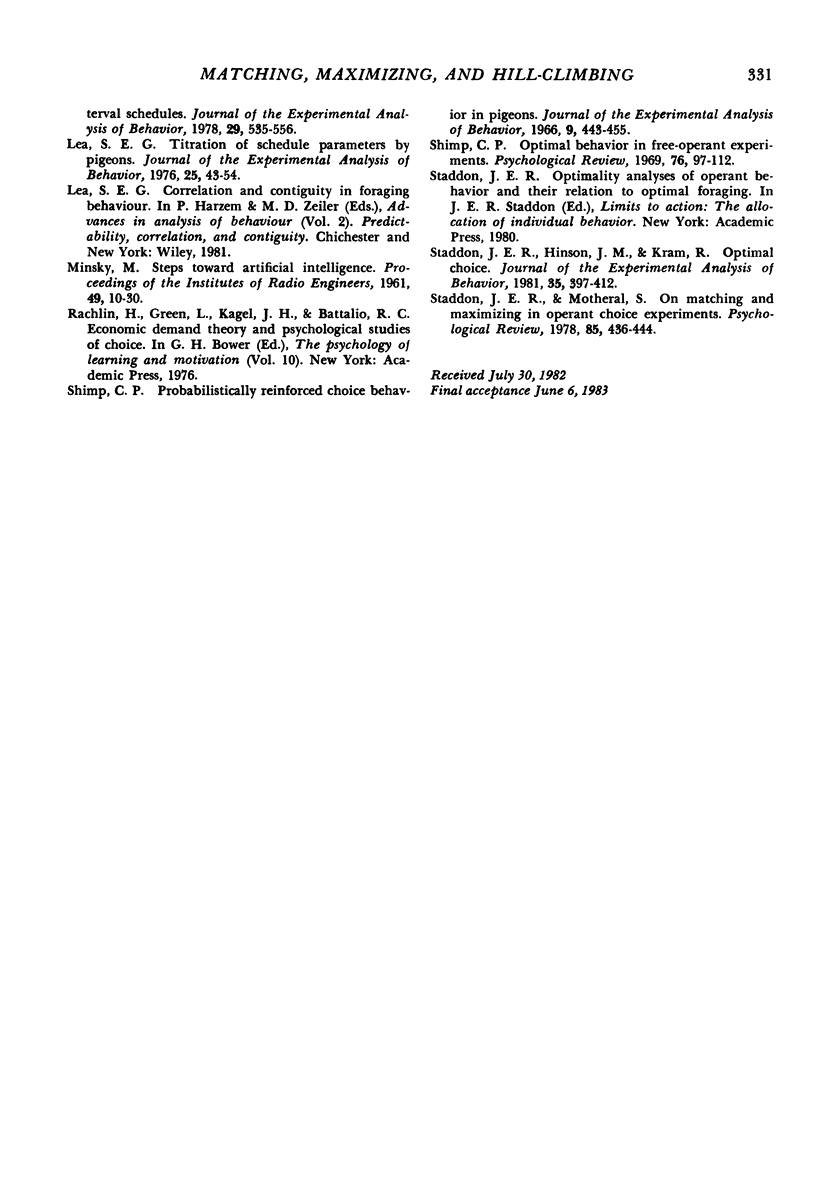
Selected References
These references are in PubMed. This may not be the complete list of references from this article.
- Bacotti A. V. Matching under concurrent fixed-ratio variable-interval schedules of food presentation. J Exp Anal Behav. 1977 Jan;27(1):171–182. doi: 10.1901/jeab.1977.27-171. [DOI] [PMC free article] [PubMed] [Google Scholar]
- Baum W. M. Choice, changeover, and travel. J Exp Anal Behav. 1982 Jul;38(1):35–49. doi: 10.1901/jeab.1982.38-35. [DOI] [PMC free article] [PubMed] [Google Scholar]
- Baum W. M. On two types of deviation from the matching law: bias and undermatching. J Exp Anal Behav. 1974 Jul;22(1):231–242. doi: 10.1901/jeab.1974.22-231. [DOI] [PMC free article] [PubMed] [Google Scholar]
- FLESHLER M., HOFFMAN H. S. A progression for generating variable-interval schedules. J Exp Anal Behav. 1962 Oct;5:529–530. doi: 10.1901/jeab.1962.5-529. [DOI] [PMC free article] [PubMed] [Google Scholar]
- HERRNSTEIN R. J. Relative and absolute strength of response as a function of frequency of reinforcement. J Exp Anal Behav. 1961 Jul;4:267–272. doi: 10.1901/jeab.1961.4-267. [DOI] [PMC free article] [PubMed] [Google Scholar]
- Herrnstein R. J., Heyman G. M. Is matching compatible with reinforcement maximization on concurrent variable interval variable ratio? J Exp Anal Behav. 1979 Mar;31(2):209–223. doi: 10.1901/jeab.1979.31-209. [DOI] [PMC free article] [PubMed] [Google Scholar]
- Herrnstein R. J. On the law of effect. J Exp Anal Behav. 1970 Mar;13(2):243–266. doi: 10.1901/jeab.1970.13-243. [DOI] [PMC free article] [PubMed] [Google Scholar]
- Hinson J. M., Staddon J. E. Hill-climbing by pigeons. J Exp Anal Behav. 1983 Jan;39(1):25–47. doi: 10.1901/jeab.1983.39-25. [DOI] [PMC free article] [PubMed] [Google Scholar]
- Hunter I. W., Davison M. C. Response rate and changeover performance on concurrent variable-interval schedules. J Exp Anal Behav. 1978 May;29(3):535–556. doi: 10.1901/jeab.1978.29-535. [DOI] [PMC free article] [PubMed] [Google Scholar]
- Lea S. E. Titration of schedule parameters by pigeons. J Exp Anal Behav. 1976 Jan;25(1):43–54. doi: 10.1901/jeab.1976.25-43. [DOI] [PMC free article] [PubMed] [Google Scholar]
- Shimp C. P. Probabilistically reinforced choice behavior in pigeons. J Exp Anal Behav. 1966 Jul;9(4):443–455. doi: 10.1901/jeab.1966.9-443. [DOI] [PMC free article] [PubMed] [Google Scholar]
- Staddon J. E., Hinson J. M., Kram R. Optimal choice. J Exp Anal Behav. 1981 May;35(3):397–412. doi: 10.1901/jeab.1981.35-397. [DOI] [PMC free article] [PubMed] [Google Scholar]


